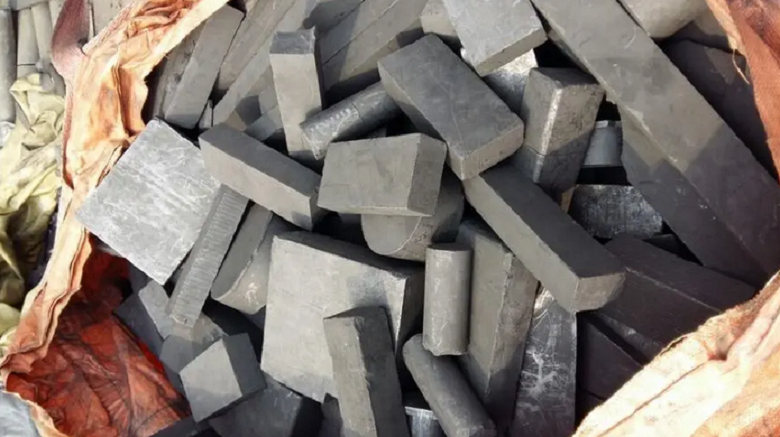

Introduction
Graphite is a naturally occurring mineral that has a unique property of being able to conduct electricity due to the alignment of its carbon atoms. Graphite can be found in many forms, including powders, flakes, and blocks. One of the most popular forms of graphite is graphite blocks, also known as graphite rods or graphite bricks. Graphite blocks are widely used in many different industries due to their excellent thermal conductivity, high melting point, and low thermal expansion.
In this article, we will explore the properties and uses of graphite blocks in various industries, as well as their manufacturing process and environmental impact.
Properties of Graphite Blocks
Graphite blocks are made up of high-purity graphite, typically with a carbon content of over 99%. The blocks have a high thermal conductivity and can withstand high temperatures, making them an excellent choice for use in high-temperature applications. Graphite blocks also have a low coefficient of thermal expansion, meaning they can expand and contract without warping or cracking.
Graphite blocks have a high strength-to-weight ratio and are extremely durable. They can withstand harsh environments and can be used in applications that require high strength and stiffness. Graphite blocks also have a low coefficient of friction, making them ideal for use in applications that require low friction.
Uses of Graphite Blocks
Graphite blocks are widely used in many different industries due to their unique properties. Here are some of the most common applications of graphite blocks:
Heat Exchangers - Graphite blocks are often used in heat exchangers due to their high thermal conductivity. They can transfer heat quickly and efficiently, making them ideal for use in high-temperature applications.
Electrodes - Graphite blocks are used as electrodes in a wide range of applications, including electric arc furnaces and electrolysis cells. Graphite electrodes are highly conductive and can withstand high temperatures, making them ideal for use in these applications.
Foundry Applications - Graphite blocks are used in foundry applications, such as molding and casting. They are used as mold materials due to their high thermal conductivity, low coefficient of thermal expansion, and excellent dimensional stability.
Nuclear Applications - Graphite blocks are used in nuclear applications, such as nuclear reactors and fuel rods. They are used as moderators due to their ability to slow down neutrons, which is essential for the fission process.
Aerospace Applications - Graphite blocks are used in aerospace applications, such as rocket nozzles and heat shields. They are used due to their high strength-to-weight ratio, low coefficient of thermal expansion, and excellent thermal conductivity.
Manufacturing Process of Graphite Blocks
Graphite blocks are typically made from a high-purity graphite powder that is compressed under high pressure and heated to a high temperature. The powder is mixed with a binder, such as pitch or tar, to form a paste. The paste is then extruded into the desired shape and size, and then heated in a furnace to remove the binder and carbonize the graphite. The resulting graphite block is then heat-treated to improve its properties.
Environmental Impact of Graphite Blocks
The manufacturing process of graphite blocks can have a significant environmental impact due to the use of high temperatures and chemicals. The extraction of graphite from mines can also have a negative impact on the environment, as it can result in deforestation and soil erosion.
However, graphite blocks are considered to be a more environmentally friendly alternative to other materials, such as metals, due to their durability and recyclability. Graphite blocks can be recycled and reused, reducing the need for new materials to be manufactured.
Conclusion
Graphite blocks are a versatile and widely used material in many different industries. They have excellent thermal conductivity, high strength, and durability, making them an ideal choice for use in high-temperature and high-stress applications. The manufacturing process of graphite blocks can have an environmental impact, but they are considered to be a more environmentally friendly alternative to other materials.
As technology advances and new applications for graphite blocks are discovered, the demand for this material is likely to continue to increase. However, it is important to balance the benefits of using graphite blocks with the potential environmental impacts of their production and use. Companies that manufacture and use graphite blocks should take steps to minimize their environmental impact, such as implementing sustainable manufacturing practices and investing in renewable energy sources.
In conclusion, graphite blocks are a valuable material with a wide range of applications. They offer unique properties such as high thermal conductivity, low coefficient of thermal expansion, and high strength-to-weight ratio that make them an excellent choice for many different industries. However, their production and use must be balanced with their potential environmental impact, and steps should be taken to minimize this impact. As technology advances and new applications for graphite blocks are discovered, it is essential that we continue to explore ways to use this material in a sustainable and responsible manner.
